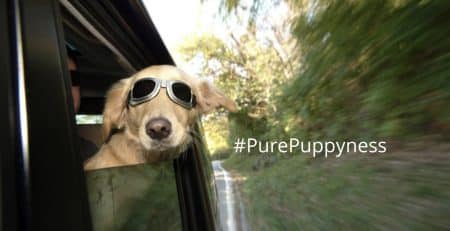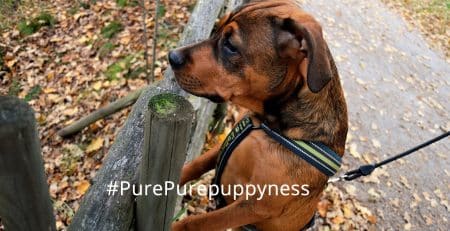Inside or outside?
There seems to be two schools of thought among dog owners. Some believe that dogs are not very different form their wild, feral cousins. Others think that dogs, unlike cats, exhibit marked dependency on humans and therefore need as much attention and protection as could be possibly afforded by the owner. In between, are a huge number of people that believe that the truth lies somewhere in between the two opposing poles of the argument.
Your cute Chihuahua and your leonine Chow are both members of the same species.
The species Canis familiaris encompasses a lot of different breeds that vary drastically in morphology from each other yet they share this ability of reproducing, resulting in viable, fertile offspring that generally defines a species. Although what really constitutes a species is up to debate as different camps in biology argue whether this is indeed something definite or not, something in human nature just allows us to instinctually know if a canid is a dog or a wild animal. Biologically speaking the distinction between dogs and wolves is a bit shady as although the distinction in morphology is quite clear it defies the more conventional concept of a species mentioned above. It seems that this ambiguity in what a dog really is, is what convinces a significant portion of people to believe that dogs although clearly domesticated are still somewhat in touch with nature more than we are comfortable to believe. This kind of reasoning then allows for the presupposition that it is indeed beneficial to let dogs live outside in the garden as this affords them the opportunity to be more in touch with nature, resulting in them feeling happier and more fulfilled.
Although this may sound like a noble idea, one must consider that dogs in captivity have longer, healthier lives than their wild cousins. It is therefore important to consider the ramifications that domestication had on the species as a whole. It is very obvious that the development of certain features through selective breeding has allowed dogs to serve mankind more than these would help them in the wild. It has been clearly seen that in MOST cases feral dogs have always been naturally inclined to become increasingly “wolf-like” in appearance with every generation that is left to fend for itself. It is then not a farfetched idea that dogs have become more adapted to hang around and cuddle up with us human beings than to roam around outside doing their best to survive in an unhospitable environment. This obvious symbiotic relationship between humans and dogs and the fact that this has allowed for the evolutionary route that both species have allowed each other to take then allows us to say that dogs indeed need the specific niche that our sides and homes can offer in order for them to maintain this mutually beneficial symbiotic relationship and not evolutionarily diverge away from our species.
Dogs much like humans need a certain balance of the elements mentioned above.
Dogs clearly suffer when left to live on the streets and only specific sporadic episodes show that dogs can effectively live in the wilderness. Although dog’s needs are as varied as their many shapes and sizes, many feel that dogs are best adapted to thrive inside our homes; a perfect environment to interact and stimulate their minds with regular human company. On the other hand it is not humane to keep a dog locked inside unless it has access to a sizable yard where it can expend its energy, get in touch with its more primitive nature and fill its lungs with fresh air. If you live in a city, a regular trip to the countryside is a must; here the dog can experience a less hectic, uncontained environment. If this is not possible, wooded areas in city parks are generally good enough to scratch your dog’s metaphorical itch. Failing to allow your dog to connect with nature will most likely result in your dog feeling depressed. Take this as an opportunity to allow yourself to enjoy nature and unwind. I also believe that different dog breeds have to be allowed to express the behaviour for which they were bred in order for them to be content. Although some people insist on making their dogs live out of the house, I personally feel strongly against it unless the house has a big yard or is surrounded by fields where the dog can roam freely. It is important, though, that this yard or field is where you spend most of the time in the day, helping you give your dog as much company as possible. It is cruel to leave your dog to endure extreme weather; those people insisting on keeping their dogs outside should bring their beloved companions inside when it is too hot or cold for the dog to comfortably stay outside. Very young and very old dogs are also ill suited to living outdoors.
At the end of the day there will always be differing views when it comes to this subject. People will still either spoil their dogs rotten, or stubbornly leave their dogs outside to weather the unforgiving elements. My appeal to dog owners is that compassion and common sense, along with a willingness to see dogs for what and who they are without romanticising them through rose tinted glasses, will be the most beneficial for their beloved companion.






















